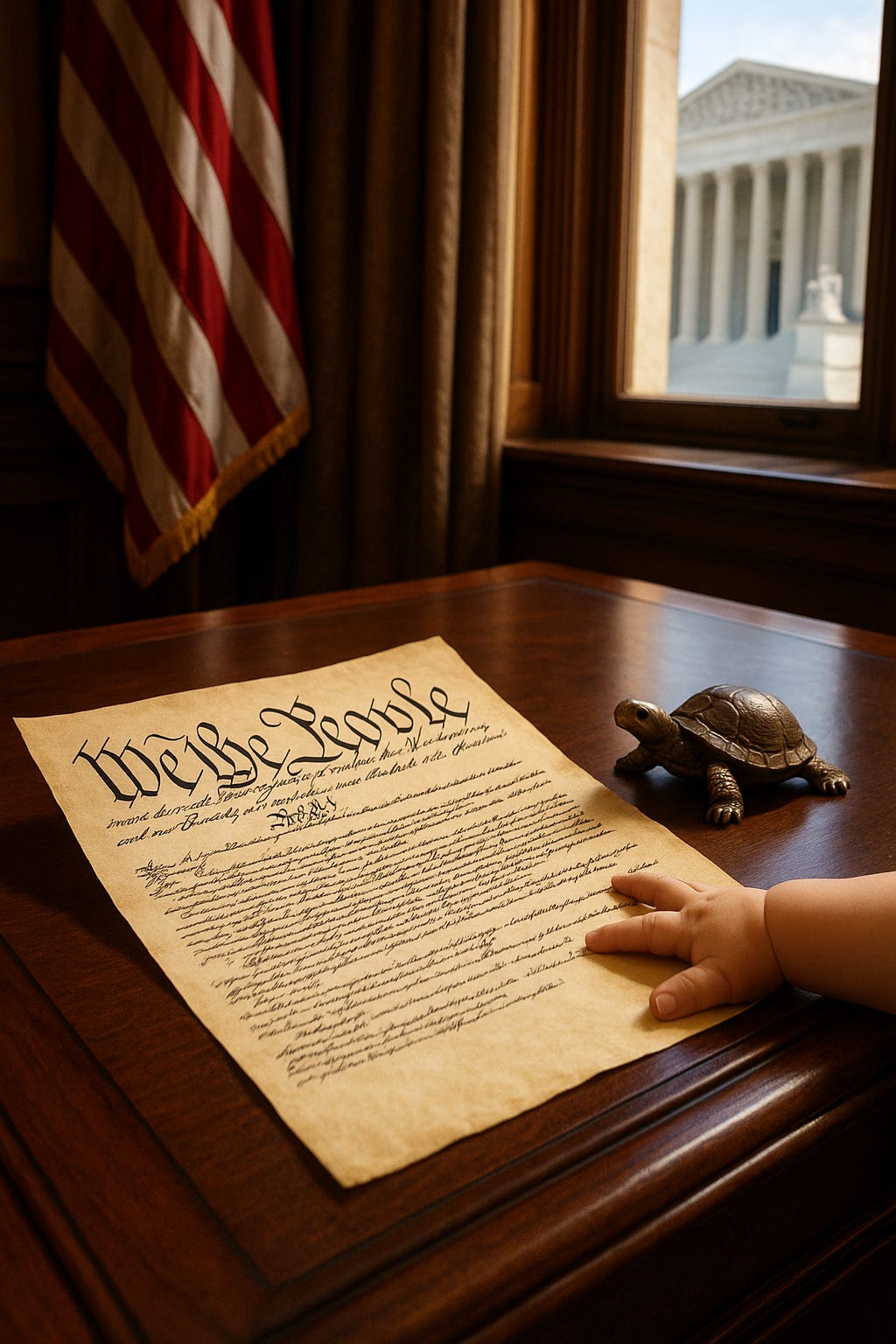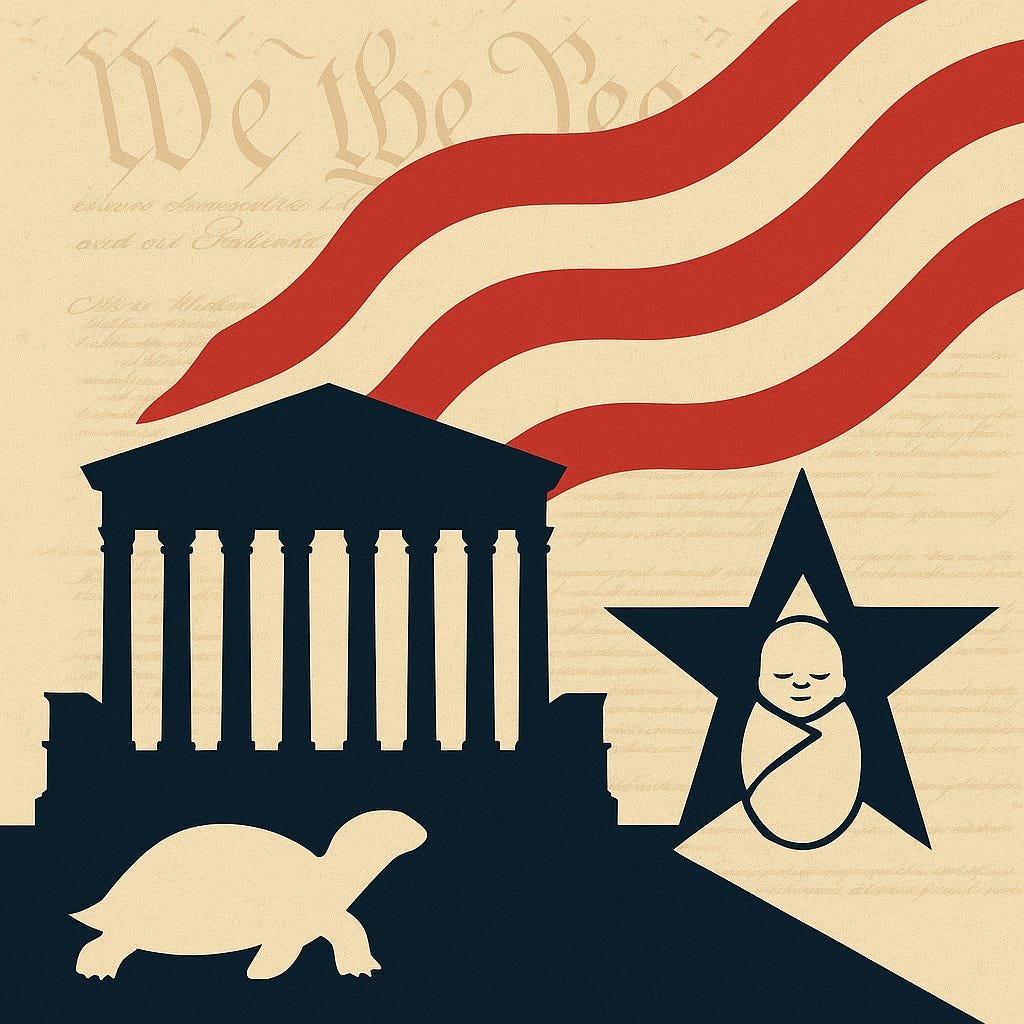Understanding The Oral Argument Order in the Birthright Citizenship Cases
The Supreme Court has three pending stay applications on the shadow docket relating to President Trump’s order purporting to rescind birthright citizenship for children of some aliens. On Thursday, April 17th, the Court issued an order setting all three applications for a consolidated oral argument on Thursday, May 15th.
I have seen this described in various sources as a “cert grant” or as a decision to take up the legality of the birthright citizenship order, and various other characterizations that I think are not quite right, so I thought I would try to assess what we know and don’t know about what’s going on here.
What the Court did
The Court did not grant certiorari, and it has not issued any decision whether to grant the stay applications or not. I don’t believe the Court has even issued any “administrative stays” while these stay applications are pending, so for now the lower court rulings — which ruled against the Trump administration and enjoined the order — are in effect. It is not even clear (as I’ll discuss in a second) that the decision to grant oral argument is good for the government. After all, the Court is perfectly capable of both granting, and denying, government requests for relief without oral argument.
What happens next?
Because the Court did not grant certiorari, there is not necessarily going to be any further briefing. It is possible that the Court intends to hear oral argument simply on the briefs it has received so far.
Of course, I am sure the Court will now receive a flurry of requests to file amicus briefs anyway, and it is also possible that it will issue another order permitting the parties to file supplemental briefs on that or other topics. (A few years ago the Court had a similar oral-argument-without-a-cert-grant on a set of stay applications dealing with the Biden administration’s workplace mask/vaccine mandate and ended up with a flurry of amicus briefs and authorized reply briefs as well.)
Furthermore, because there was no cert. grant, there is no question presented, so it is not entirely clear what the question at oral argument will be. In a broad sense, the question is, should the stay applications be granted? But it is not clear whether the Court will focus on the universal injunctions question that it has avoided for a decade or so now, discuss other equitable or procedural issues, or even get into the underlying illegality of the executive order. If there are further briefs filed, I would not be surprised if they try to broaden the issues in play in various ways.
Why did the Court do this?
We just do not know why the Court did this. It is possible, as some commentators think, that this is a sign that the Court is finally going to issue a rule forbidding or limiting universal injunctions, and that this is going to be the vehicle. (See Sam’s earlier post on whether these cases are a good vehicle for this question.)
Maybe. But maybe not. After all, the oral argument grant might signify that the Court does not currently have five votes to issue such a rule (but perhaps also does not have five votes to squarely reject such a rule?) and is thus still trying to figure things out. Or they could be in search of another way to resolve the case. As noted above, the process leading up to oral argument might provide avenues for other issues to creep into the case, issues that the Court might rather talk about.
It is also possible that the oral argument grant reflects a desire to talk about the illegality of the underlying order. Perhaps the Court will ultimately issue an order — somewhat analogous to the Marburyesque opinion in Trump v. J.G.G. — that says 1, the order is probably unlawful, but 2, relief should be limited to the named plaintiffs. Or perhaps the Court will not opine on 1 because the government mostly has not raised it (but see pp. 15-17 of their reply brief). Even so, oral argument might reveal the views of many of the Justices on the merits.
Finally, though, Occam’s Razor suggests another explanation. The Court initially received the applications on March 13. It asked for responses on a schedule that led the applications not to be fully briefed until April 7. April 17 was the first conference date after that, and the Court has now asked for another month. It could simply be that the Court decided, from the get-go, that it wanted to consider these applications slowly (relative to the usual shadow docket pace), and so the order reflects only that. This is a strategy that Jack Goldsmith calls “temporizing,” and that may be all there is to it so far.
So don’t be too sure we know what this portends, but we will find out a lot more next month.
P.S. Two Technical Matters
I realize that many people are now calling the consideration of applications like this the “emergency docket,” and that this term is supposed to avoid the supposedly negative connotations of the “shadow docket.” But is there any sense in which these petitions can be fairly called emergencies? There is no administrative stay; the lower court decisions have been in place for over a month, and will be in place for another month, and the Court’s pace of briefing here does not communicate “emergency.”
Do we know how many votes it takes to schedule oral argument on a stay application? On one hand, it seems odd for it to be five or more, because it only takes four to grant cert. And indeed, couldn't four justices choose to treat the stay application as a cert petition, and then grant it? (And actually, if they can do that, would they also then be entitled to a "courtesy fifth" on the stay application for at least the duration of oral argument?) On the other hand, you could even imagine it being fewer than four—more like calling for a response to a cert petition or a stay application. I do not know the answer, but the answer seems relevant to what the oral argument order portends.




The “courtesy fifth” suggestion sounded off to me, because I had assumed that practice was limited to situations in a failure to grant a stay would moot the cert petition that four Justices wanted to grant — generally in capital cases, but I guess the same dynamic could arise in other cases too. But I see that Justice Breyer voted to grant a stay as a courtesy in Gloucester Co. School Bd. v. G.G., back in 2016. Although I can’t find a copy of the stay papers , it doesn’t appear that there was any threat of mootness there, and Breyer’s opinion doesn’t suggest as much.
(It’s a classic Breyer multi-part explanation: (1) four Justices had voted to grant the application; (2) the Court was in recess [unclear why that matters??]; and (3) a stay would preserve the status quo as it existed before CA4’s decision. Mike Dorf wrote a post at the time explaining how his vote didn’t really make sense, except perhaps as an olive branch to secure more “courtesy fifth” votes from CJR or AMK in the future.)